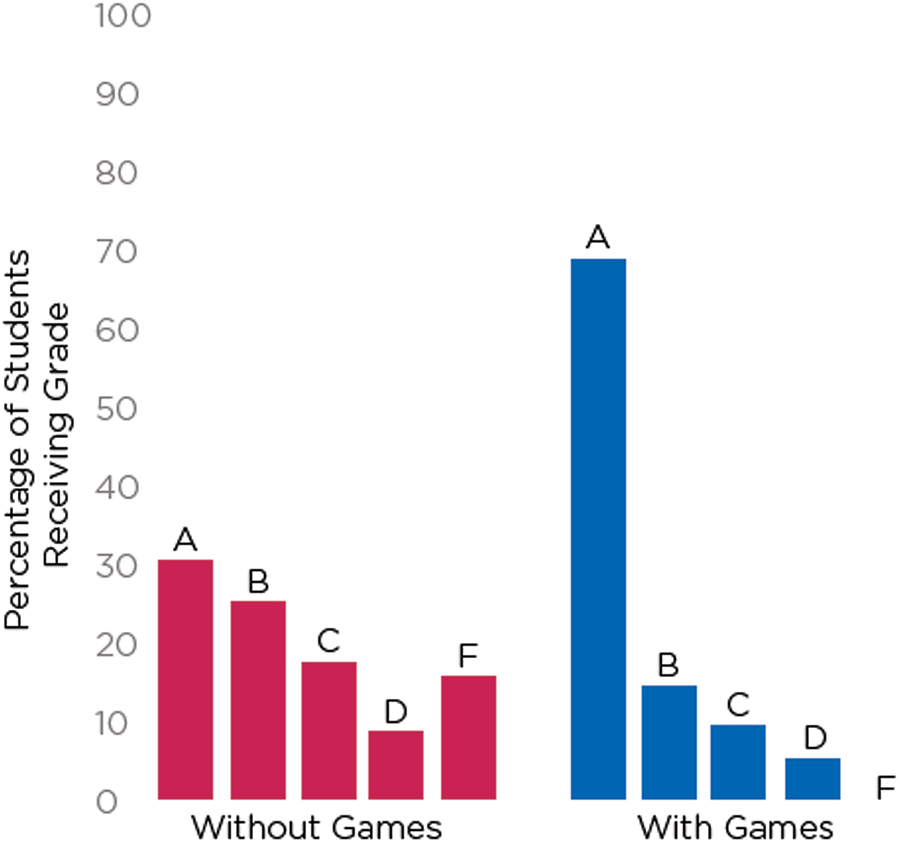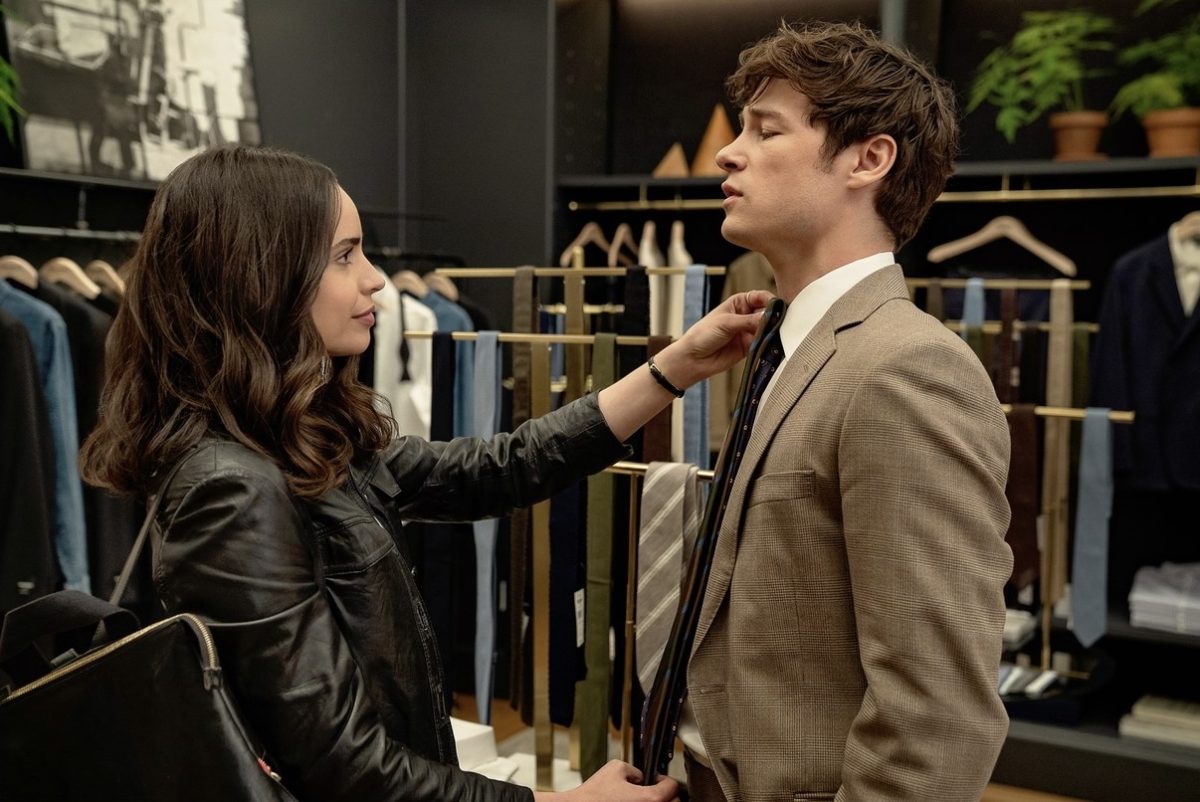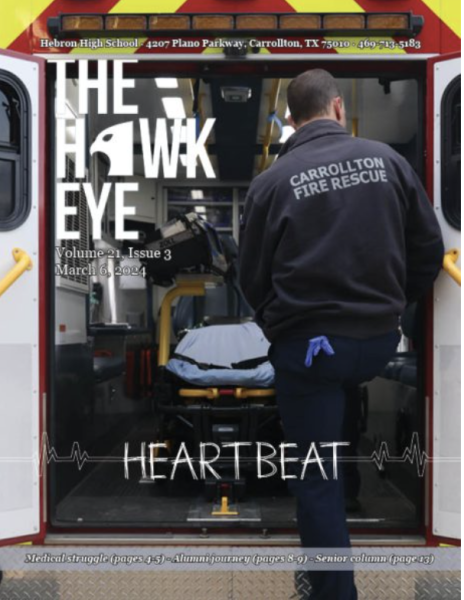Teachers aim to bring games into classrooms
A study by Richard Blunt, a director for the Department of Defense, shows the effects of classroom games on students’ grades.
January 7, 2014
A newly formed group, called G4M1NG for Learning (G4L), is exploring game-based learning (GBL) and “gamification” of the classroom by bringing together teachers throughout the district. The team launched the program on Dec. 3, and there are 26 teachers participating in the program.
GBL combines entertainment with education for several benefits, according to the coaches. Josh Currie, one of the six strategic design coaches for GBL, said that it tests problem solving and critical thinking skills.
“Just think about those games you play with your friends,” Currie said. “You play those games because you are having fun together. A lot of times, when learning is fun, it is profound. It’s meaningful and it’s exciting; therefore, your engagement increases.”
A fact that strategic design coach Jenn Wilkins Colvin emphasized is that a majority of people consider themselves “gamers,” whether they play video games, board games or sports.
According to Dr. Jane McGonigal, a researcher of games and game theory, 99 percent of boys and 94 percent of girls under the age of 18 regularly play video games. McGonigal also said that most will accumulate about 10,000 hours of gaming by the time they turn 21.
“If [teachers are] not gamers themselves, they have kids that love gaming and they want to connect [to their kids] and take advantage of that,” Wilkins Colvin said.
Supposedly, “gamification” of classrooms would also help increase the engagement levels at the school. The school’s results from a Gallup student poll, conducted in the fall, showed that 32 percent of students are not engaged and 33 percent are actively disengaged, which means that students are purposely not participating in class.
“We need to be creative in how we engage students,” assistant principal Michael Vargas said. “If students are engaged in gaming, then we need to come up with creative ways to incorporate education with gaming.”
With games, students are more enthusiastic about learning because they challenge students in a different way, according to strategic design coach Nelson Orta.
“[Students are] willing to try something again and again even when it’s really difficult [when playing games],” Orta said. “I think those are the kind of behaviors we are hoping to tap into in game-based learning. We’re trying to take advantage of games that promote a stronger persistent form of learning.”
Unlike a test, Wilkins Colvin also said that students will be able to receive immediate feedback during GBL and are able to repeats “levels,” which increases retention.
“Failure is never a concern,” English teacher Kathryn Gaughan, a member of G4L, said. “They know if they’re failing, they’re at least trying something different [because] that’s how games work.”
The games that G4L promotes do not only include digital games, but also card and board games, sports, and other varieties. For example, strategic design coach and former teacher Aaron Harrell used the game of tag to teach his students how energy is transferred between organisms.
“Games promote critical thinking and problem solving, as well as collaboration,” Harrell said. “They involve coordinated efforts between a lot of different people working towards a common goal.”
The versatility of GBL is what makes it such a powerful tool, according to Orta. The elements of GBL are present across all school subjects and are also found in real world settings.
“I don’t see how you can limit the creativity and imagination of the students and even teachers,” Orta said. “It works for Nike selling shoes, it works for American Airlines when they’re training their pilots. It works for everybody.”
More than a quarter of students answered “least likely” to a prompt concerning if students had been recognized or praised for their work in the past seven days. Through GBL, Currie said that there is a rewards system in the games, which serves as motivation.
“Everyone likes to get something at the end, some type of end results or accomplishment,” Currie said. “Pushing through ‘gamification’ will allow some reward system to happen.”
Although GBL has its opponents, Wilkins Colvin said that the end result of the collaboration is simply to unite those interested in learning more about it.
“There are criticisms out in the real world, and in the classroom in the educational world, about gaming,” Wilkins Colvin said. “The reality is that our students game.”
The next G4L meeting will be on Jan. 28 from 5 p.m. to 6:30 p.m. Teachers interested in attending can contact Wilkins Colvin at wilkinscolvinj@lisd.net.








Gillian • Jan 24, 2014 at 9:01 AM
Like this news story. Sounds very informative and professional.